New menu at Shutters on the



Burger joint Big Jo’s, a Santa Monica institution for over 65 years, plans to permanently close later this month.
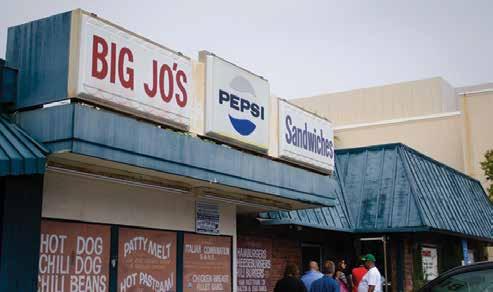
According to owner John Lee, the restaurant, located on the corner of Broadway and 20th Street, will close on October 17. Since Lee announced the closure on social media this week, there has been an outpouring of support from the community.
“There is so much love. People have such an attachment to this place,” Lee said. “The food has just been really good and consistent. For me, when I eat it, it makes that connection to old-school-style burgers. It’s not like something you can get at a Shake Shack or one of these $20 gourmet burgers. It just kinda has its own unique flavor.”
John, his wife Joy, and her sister Hanalani took over the restaurant in 2016 from Joy’s aunt, who had run the restaurant for around 20 years.
“It used to be an old service station back in the 1940s and the original Big Jo…converted
into a burger joint,” John said. “From then on it was passed through generations and decades from owner to owner. It’s been in our family since maybe late 1999 or early 2000, and it was transferred to us in 2016.”
According to John, the landlord is selling the property, forcing Big Jo’s out.
“Even Big Jo’s can’t survive the changing environment of new developments in Santa Monica,” John said in a press release announcing the closing. “This is a typical momand-pop joint. I think there was one of these in every city back in the day, but now the world has been changing so you don’t see too many of these restaurants anymore.”
John pointed to a development underway a few blocks east on Broadway and Cloverfield as an example of the way Santa Monica is changing.
“It’s kinda inevitable. It’s just the way the world is changing. I mean big developments. You see the new development down on Cloverfield?
I feel like they are just going to duplicate that over here. I am not sure who the new buyer is or landlord is but this is a total redevelopment site and you know, I don’t think there is much the city can do, “John said. “I mean what can they
John says that despite the fact Big Jo’s will be leaving the corner of 20th Street and Broadway later this month, he and his wife hope to relaunch in a new location.
“We have nothing concrete but me and my

wife we decided, seeing the outpouring [of support].. .to figure something out,” John said. Follow @Big_Jos_Burgers or www. bigjosburgers.com for updates and announcements on their future plans to relocate and re-open.
The Santa Monica-Malibu Unified School District’s (SMMUSD) continues to face backlash over their handling of the water intrusion and mold issues at the John Muir Elementary School and SMASH campus. A group of concerned parents and residents took their grievances to the SMMUSD office last week, holding a rally outside of the offices.
Per the group’s press release, “On Thursday, October 6th at 5:00 p.m. parents, students, teachers and community leaders held a press conference and parent rally at the headquarters of the Santa Monica
Malibu Unified School District (SMMUSD)

Board of Education at 1651 16th st, Santa Monica, CA to express concern for the untimely closure of John Muir Elementary school. John Muir was abruptly closed following the District’s announcement that toxic mold found at the school presented a health risk to students and staff. The school closure forced the dispersal of 280 students and 42 staff to various schools within the SMMUSD school district.”
For their part, the parents and others who held the rally at the SMMUSD offices allege that “SMMUSD school district officials knew about the mold problem for years yet incumbents running for re-election refuse to turn over any emails related to the matter in PRA requests. They further allege that John Muir Elementary had the highest concentration of lower-income students and has not received proper support from SMMUSD.”

Three scientists, Franklin Wolfe, Structural Geologist at Chevron CTC, John H. Shaw, Harry C. Dudley Professor of Structural and Economic Geology at Harvard, and Andreas Plesch
Senior Research Scientist at Harvard University’s Department of Earth and Planetary Sciences conducted a study that was published in the Bulletin of the Seismological Society of America. The study was entitled Origin of the Palos Verdes Restraining Bend and Its Implications for the 3D Geometry of the Fault and Earthquake Hazards in Los Angeles, California.
The study stated that “The Palos Verdes fault zone (PVFZ) extends across the southwestern Los Angeles basin and Inner Continental Borderland, California, and is considered capable of generating large damaging earthquakes with short recurrence intervals” over a magnitude of 7.8 rather than the 7.4 magnitude that was previously reported after new 3-D modeling.
In the study, the PVFZ, which is a 110 km long fault zone, was found to be a “complex fault geometry and slip patterns suggest that the PVF is a highly segmented fault, which may rupture in moderate-size earthquakes that involve individual segments or large events.” The study concluded that the PVFZ fault zone had the potential for a magnitude of 7.1 to 7.4 for single‐segment ruptures and 7.4 to 7.8 for
multi segment ruptures over time.
“The Santa Monica Bay segment and RCFZ (Redondo Canyon Fault Zone) should be considered as active seismic sources capable of moderate‐to‐large magnitude earthquake events that would directly impact the metropolitan Los Angeles area,” reads the study. “Given the offshore extent of the fault, it might be capable of generating local tsunamis in the San Pedro and Santa Monica Bay, as well as in the Los Angeles and Long Beach Harbors.”

The good news is that due to the reported slip rate of 1.1 to 5.9 minimum years average recurrence intervals for these single and multi segment rupture scenarios are between 580 to 610 years and 760 years to 1170 years respectively. This does point out, however, that because Los Angeles is located in a seismically active area, we must strive to be ready for seismological events even though the possibility of them happening is low.
The fault has been active since the Miocene epoch in history and is a major regional seismic source. The Miocene epoch was the first epoch of the Neogene period about 23.03 to 5.333 million years ago. It was about the time that the Apes first rose and diversified as a species and the collisions of the continents were causing mountain ranges to be formed, particularly in the collisions between Asia and the Indian subcontinent and in western North America, Europe, and East Asia. Even though this time period happened long ago, most of the plants and animals were the same as those in modern times.
















It’s time to lace up those running shoes! After two years of being virtual, the Westside Food Bank’s 32nd Annual 5K Hunger Walk is now back in person, returning to Santa Monica’s Ocean View Park this weekend.

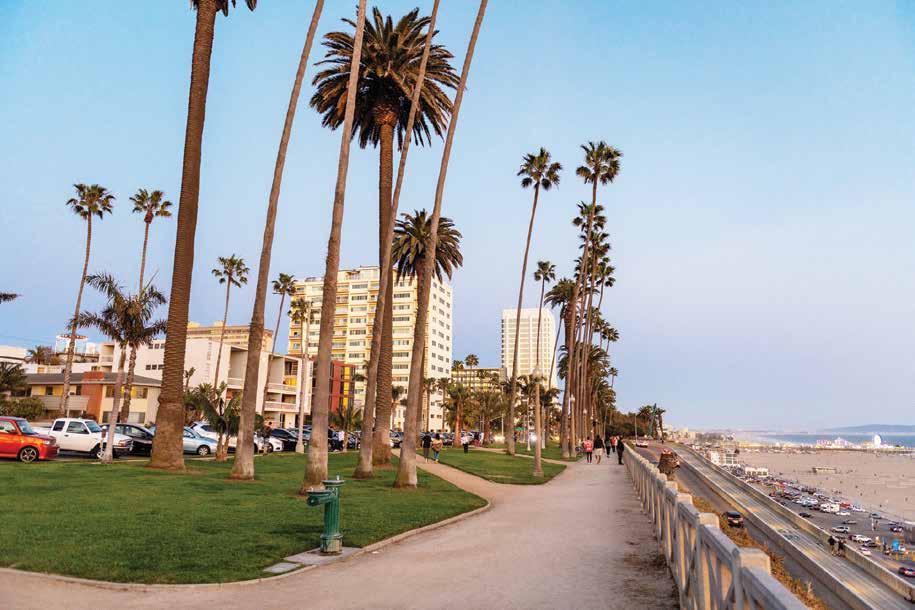
The event is set to take place on Sunday, October 16 at Ocean View Park, located at 2701 Bernard Way along Ocean Front Walk. Event registration and check-in will begin at 12 p.m., followed by live entertainment and activities from 1-2 p.m. At 2 p.m. the walk will start. The event will wrap up at 3:30 p.m. with an after party.
Westside Food Bank’s goal is to raise more than $125,000 to help provide nutritious food to people in need in west Los Angeles County. Every $1 donated during the event will provide four meals for the community.
“The Hunger Walk is Westside Food Bank’s signature event — we don’t hold an annual gala, so this is the main opportunity for our community to gather together and show support for our neighbors in need,” said
Westside Food Bank’s President and CEO Genevieve Riutort. “It’s an equal opportunity event! We welcome people of all ages from those in strollers to those using walkers and everyone in-between — you can even bring your dog! I hope everyone in the community will come celebrate our return to an in-person event!”
People can also text “WSFBHUNGER” to 50155 to help contribute to the overall goal.
All walkers — in-person and virtual — will get a free T-shirt and swag bag for their participation in the walk. Participants can sign up for free on Westside Food Bank’s 32nd Annual 5K Hunger Walk website or visit wsfb. org/hunger-walk. Those who pick the virtual
The Santa Monica College (SMC) Debate Team is back. For the first time since COVID-19 necessitated the transition to online events, five SMC Debate Team members participated in the in-person Pacific Southwest Collegiate Forensics Association (PSCFA) “Warm Up” tournament held Oct. 1 at El Camino College. SMC students Nadia Lopez and Orion Young were awarded “Excellence” for winning three out of their four debate rounds.
In addition to Lopez and Young, Klara Shawky, Angelina Sandoval, and Shelby Coleman competed in the International Public Debate Association (IPDA) event against 23 students from eight colleges and universities, including San Diego State University, Santiago Canyon College, Moorpark College, and Grand Canyon University.
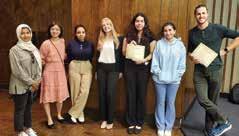
“While I really enjoyed competing, I also liked getting to know the team better.

Santa Monica's goal in addressing the homelessness crisis is to create permanent housing solutions and the prevention of homelessness. Because this issue is complex, we’re also working to identify new resources to support behavioral health while responding to immediate public health and quality-of-life issues.
We interacted 11,000 times with people experiencing homelessness through our city-funded outreach teams.
$8 million in grants were provided to 19 local agencies and 35 programs through the Human Services Grants Program providing a range of services to vulnerable populations to prevent and address homelessness.
$1 1 5 million in local and state funding secured for behavioral health services and programs.
The Santa Monica Fire Department launched its Community Response Unit with the goal of improving the safety, health, and wellbeing of the city’s vulnerable populations.
FOR UPDATES AND MORE INFORMATION: Visit santamonica.gov/progress- in-addressing-homelessness or scan the QR code

Practice debates can feel a bit impersonal and intimidating when you haven’t competed,” said Nadia Lopez. “The tournament was an opportunity to all be on the same team and complain about topics, get lost finding our rooms, or laugh over a ridiculous analogy we made for the sake of arguing your point.”
Lopez added that the in-person tournament gave her a new perspective on how much fun debating can be “if you let yourself see it that way.”
Orion Young appreciated the opportunity, too, stating that, “trying to guess how other debaters are going to interpret the topics is the most fun. It’s also interesting to see which arguments and strategies end up resonating with the judges. It’s often not the ones that I would expect.”

Cypress Equity Investments (CEI) has made a presentation to the Santa Monica Architectural Review Board as reported by Urbanize Los Angeles regarding their plans for 2025 Wilshire Boulevard.
CEI’s plans call for a mixed-use development that would be built on the oddly shaped site on Wilshire near 20th street. The developers want to demolish the buildings that are currently on the site, that house Chipotle and Veggie Grill restaurants in the L-shaped area.
This new structure would hold 46 studio, one, two, and three-bedroom apartments in a four-story building with a two-story 100-vehicle underground parking lot and 5,113 square feet of commercial space on
option will have set days/times to pick up their T-shirt and swag bag.
A virtual version of the Walk is also running from through October 16. Those participating virtually will have multiple days to finish the 5K and wrap up on the same day as the inperson event.

For more information, visit Westside Food Bank’s 32nd Annual 5K Hunger Walk website.
Founded in 1981 by the Westside Ecumenical Council — a coalition of Westside social service agencies — Westside Food Bank is an independent, non-governmental, nonprofit organization, providing food for more than
Students debated on a variety of topics. Angelina Sandoval noted that “arguing that the U.S. Federal Government should adopt California’s EV policy was interesting. Other than research and organizing, when you don’t know what the opponent will say, creativity was essential.” Other topics included “The U.S. should grant statehood to Puerto Rico,” “Access to higher education is a human right,” and “Zero cash bail does more harm than good.”
The SMC Debate Team functions both as a student club and as a Communication and Media Studies department class. Meeting
the first floor. None of the apartments on site would be affordable housing, the requisite affordable housing would be located at 1211 19th Street and consist of seven units.
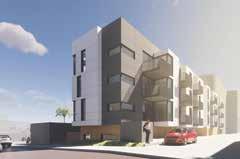
The designers of record for the development at 2025 Wilshire are DFH Architects and DLR Group. The plans for the structure show that the building has a planned rooftop amenity deck and the exteriors would be made of wood-colored metal rain screens and white stucco.
150,000 people across the Westside. WSFB partners with more than 65 social service agency programs to distribute 4.75 million pounds of food annually. Such programs include food pantries, preschool/after-school programs, domestic violence shelters, senior citizen meal and grocery delivery programs, bridge housing facilities and more.
“Our mission is to end hunger in our communities by providing access to free, nutritious food through food acquisition and distribution, and by engaging the community and advocating for a strong food assistance network,” the organization says. “The majority of our food goes to housed people who need help to afford groceries.”
and practicing just a couple hours per week, students discuss current events, practice debating, and learn about their own strengths and weaknesses.
“Our students give up a lot of time and energy to compete on the debate team,” said Debate Coach and Communications & Media Studies Professor Nate Brown. “Weekend tournament are long and physically and psychologically strenuous. I am always inspired by the students who feel drawn to it and are willing to dedicate so much of themselves to it.”
The SMC Debate Team’s presence at this competition was sponsored by the Associated Students of Santa Monica College. For more information on the SMC Debate Team, contact Nate Brown at brown_nate@smc.edu.




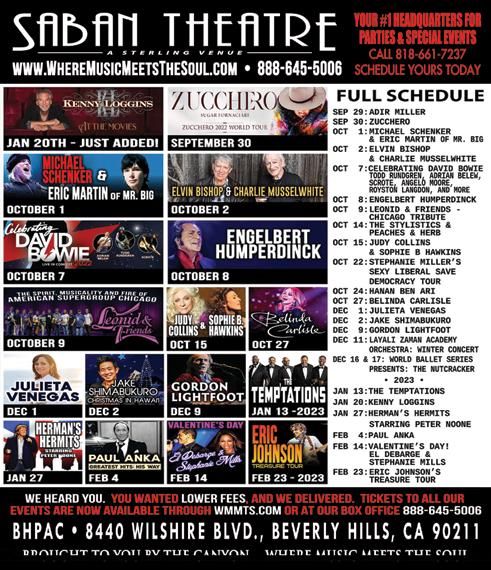
Miles Warner, a parent, and candidate for the school board said, per the press release, “If you don’t listen when your employees tell you there’s mold, the problem gets worse and you end up spending millions on mitigation and lawsuits. That’s exactly what’s happening, and it’s our kids who suffer. It’s indicative of the fundamentally problematic culture of our school board and district management. The mold was known about for years and not addressed. Kids got sick and now the school is closed and we don’t know when we’ll get our neighborhood school back.”
Warner also stated, via phone interview, that while SMASH had been relocated whole to the Obama Campus, the students of John Muir had been relocated to different schools. The SMMUSD September update seems to confirm this statement and it says, “Muir students and staff have predominantly joined the Will Rogers Learning Community, with some families relocated to Grant and other Santa Monica schools. SMASH has relocated to the Obama Center campus.”
Jon Kean, a SMMUSD school board member responded with a statement via email,

“The school district and Board have been very attentive to the facility concerns at Muir/SMASH over the recent years and while repairs did yield short-term positive
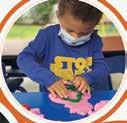


results, it became clear that the physical problems ran deeper. The District brought in a nationally recognized consultant to get to the bottom of the problems. Upon reading the subsequent report and the clarity of needs, the District and School Board took immediate and decisive action to close the campus and relocate students to other schools and campuses. It is never an easy decision to move students or temporarily close a campus but it was the right decision. The District and Board were clear: we will fix the facility issues once and for all and reinvigorate the campus as a vital neighborhood school. There has been and will continue to be clear and open communication and collaboration with families and stakeholders as we proceed on what we expect to be a two-year journey.
It is a shame that while Muir, SMASH, and other elementary campuses throughout SMMUSD have accepted this temporary disruption to their school’s routines and have embraced the challenges for the benefit of students, others in the community are sadly using this complicated time to score political points against the school district with students as their pawns.”
SMMUSD Community & Public Relations Officer Gail Pinsker said via an emailed statement, “There is a water intrusion problem, not a mold infestation problem, at the school and some mold was discovered at that time. This campus is the newest campus of our 15 school sites in Santa Monica and Malibu.”
As part of the September SMMUSD Wave update, they state, “The SMMUSD Board of Education approved an architectural design services contract in early September as the next step of the repair project at the SMASH / Muir campus. This project is necessary due to long-standing major water intrusion issues, and mold and termite concerns.”
On October 4, Dr. Ben Drati, Superintendent of SMMUSD, assured parents in the school system that there would be a return to neighborhood schooling in the John Muir/SMASH area. His statement reads, “There will be a renewed and restored neighborhood school once the necessary work is done on the affected buildings to ensure that the facilities are safe and ready to welcome students and teachers back. Beginning in early November, we will commence meetings with a committee of parents and staff from Muir and SMASH where we will be ready to discuss programs and opportunities for the renewed Muir / SMASH campus. More information will follow about this phase soon. Please rest assured that the process will be an inclusive one.”
The September letter update from the SMMUSD Wave reveals the length and cost of the repair at the John Muir/ SMASH campus, “These significant issues necessitated the relocation of all students and staff for this school year so that extensive building repair may be expedited. The repair project is expected to take two
years and estimated to cost nearly $20 million.”

It is clear that some local parents and residents are concerned about how the renovation is being handled and the effects of relocating the students of John Muir Elementary to multiple campuses around the Santa Monica area.
John Muir parent and local civil rights and disability rights attorney, TJ Hill rebuts SMMUSD’s contentions, via an emailed statement, “Our beloved John Muir Elementary has long been underfunded, under-resourced and neglected by the SMMUSD. Despite this inequitable treatment, the parents, teachers and students, with the support of our local neighborhood, have built John Muir into a vibrant and unique learning community -- a true neighborhood school.
After years of facility neglect, our school was unceremoniously taken from us in a process that served to confuse, disempower and disenfranchised the members of our community, many of whom are already marginalized. We have had enough of the inequitable treatment, broken promises and vague plans for the future of our school.
We implore Superintendent Dr. Ben Drati and the SMMUSD Board of Education to commit to a defined and purposeful plan to rebuild and reopen John Muir Elementary as a fully resourced neighborhood school -to bring equity to a community that has for too long been ignored.”
Health care should be hassle free. With connected teams and flexible ways to access care, Kaiser Permanente makes it easier to get the support you need to stay healthy.


The care you need, the way you want it.

1 Pico’s Amberjack is imported from the Japanese island of Shikoku, famous for its warm waters and dedicated fish farmers who reportedly have ‘conversations’ with their finned friends daily to promote their development. The result is an enticing, meaty filet that is a slightly sweet and mellow umami of buri (yellowtail) crossed with saba (mackerel).
Meat eaters will celebrate the Elysian Farms Lamb. This lamb is difficult to acquire as it is not only Chef Runyon’s favorite, but also the lamb of choice of world-class chefs Thomas Keller and Daniel Boulud. Raised exclusively in Pennsylvania’s Allegheny Mountains on a diet of clover, the result is a rich and delicious flavor. The lamb graze free with year-round access to these fertile fields.
There are so many wonderful farms and ranches all around us. Being a coastal chef has an added bonus, my phone rings daily from fishermen about their amazing catches of the day,” explains Runyon, “sometimes these anglers will even send me video of their catch as it is being pulled into the boat! Since I cannot be out there with them, this is the next best thing.”
Combined with stunning ocean views from the indoor dining room, the al fresco courtyard and the exemplary service, the restaurant’s new menu is simply a feast for the senses and not to be missed.
1 Pico is open from 5:30-9:30pm from Wednesdays to Sundays and serves brunch from 11:00am to 3:00pm on the weekends.
Executive Chef Sean Runyon at 1 Pico Restaurant at Shutters on the Beach, welcomes his new menu concept just in time for all your holiday entertaining plans. Chef Runyon refers to his new culinary repertoire as ‘Simply Grilled,’ however, his approach to sourcing the raw ingredients, is anything but simple. The Chef and talented sous chefs have searched the world for the farmers, fishermen, and ranchers who
cultivate and harvest the finest products on the market.


The most sought-after meats, seafood and produce selected are combined using Runyon’s layering of light oils and delicate spices to help bring out the inherent flavors of each ingredient in a way that belies the relative simplicity of searing meats and vegetables over flame.

“Los Angeles is an international gateway and a city of foodies, we are passionate about impressing them with our service, setting and, most importantly, the flavors ,” explains Chef Runyon.
For the finest fruits and vegetables, there is little reason to look outside of sunny California. A colorful and unique 1 Pico find are the Candy Stripe Beets. These striking heirlooms, also called Chioggias – for the Italian town where they originated – are now a favorite of California beet growers. Resembling candy canes with their red and white stripes they are the perfect complement in the restaurant’s sweet and savory gazpacho with organic California strawberries, John Givens organic tomatoes harvested just up the Pacific Coast Highway, and blended with a crisp champagne vinegar.
“It’s so exciting to be a chef in Santa Monica.




Measure CS– for a safe and strong Santa Monica Measure DT and DTS to aid economic recovery
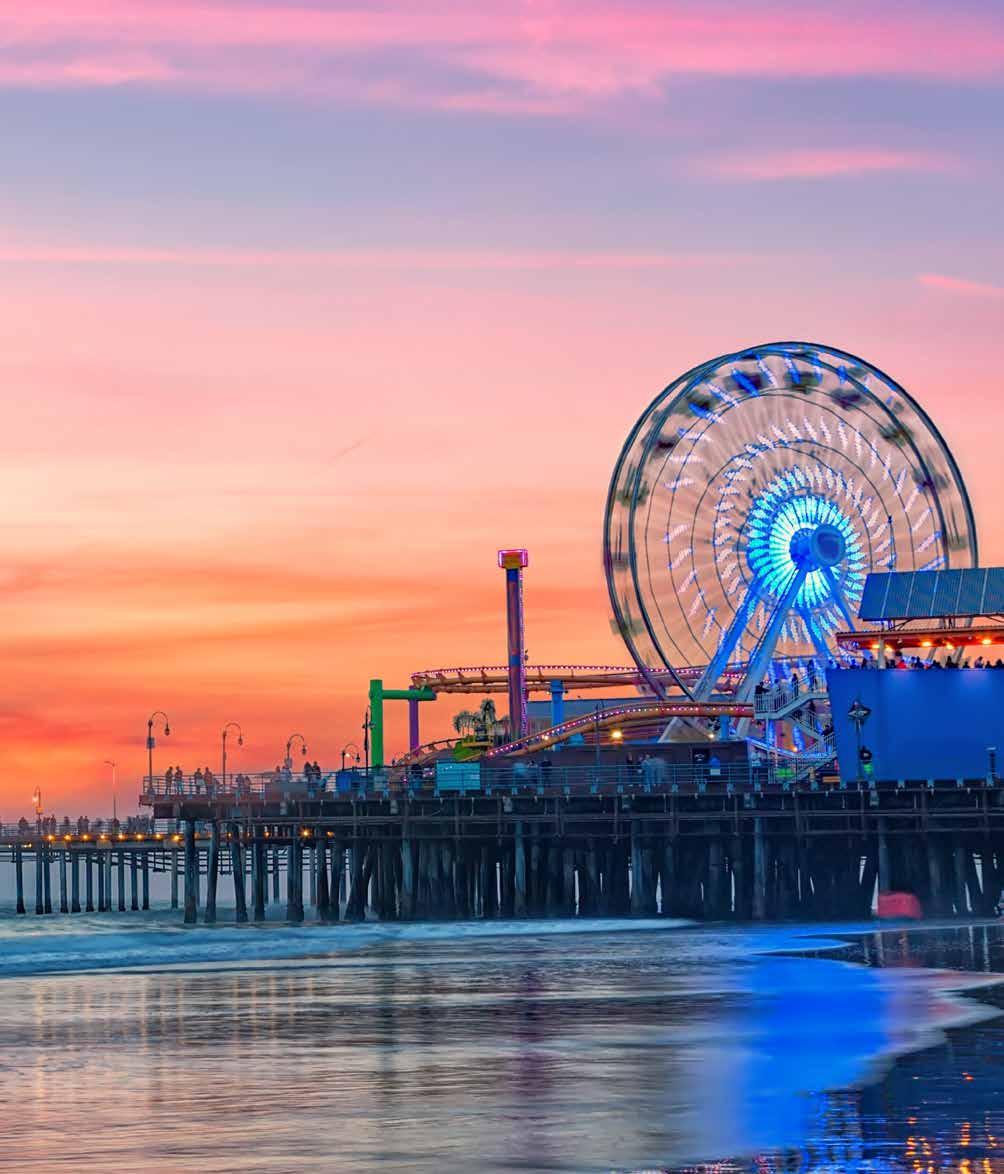
Councilmember
Santa Monica Native, Small Business Owner,Renter, and Mom

Committed to
Prioritizing Public Safety Services
Addressing Homelessness
Investing in Small businesses and job growth
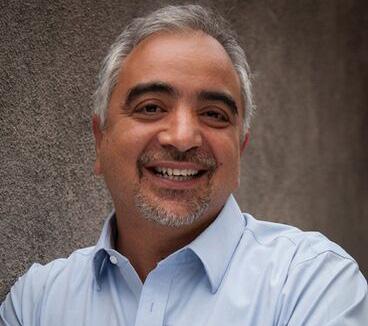
Armen Melkonians
Civil Engineer
Community Leader
Committed to Bringing back balance
Restoring public safety Revitalizing our economy
Albin Gielicz

Recreation and Parks Commissioner
15 year community servant
Committed to
Feeling Safe in Santa Monica
Addressing Homelessness Getting to full economic recovery
Ad paid for by Santa Monica Police Officers Association for a Better Community. Not authorized by a candidate or a committee controlled by a candidate.
An upcoming play will showcase the events of two groups of citizens in the 1970s that worked to save the Santa Monica Pier from City Council’s plan to build a 35acre artificial island in the bay with a bridge connecting it to the Santa Monica freeway.
The “Save The Pier” play’s free live performances will be held on the west end of the Pier each day on Oct. 20-23 from 7-8:30 p.m. The play comes 50 years after the winter of 1972, when Santa Monica City Manager Perry Scott presented the City Council with plans to replace the Pier with a bridge to a proposed manmade resort island. The community pushed back and the plan to build the island was defeated. The Council, however, voted to demolish the Pier anyway. The community rallied again, this time targeting three City Council members who were up for re-election that spring. The Council rescinded their decision. Sentiment was so strong among voters, however, that not a single Council member who had voted to demolish the Pier ever won their re-election bid.
As reported in a local newspaper at that time, “[City Manager] Scott has a vision, instead of the 54-year-old pier, he sees, 500 feet off the shore, a $60 million, 35acre island with a 30-story hotel and convention center, a sports pavilion, a theater complex, specialty shops, and five quality restaurants.” Scott stated, “The island would be more attractive than the existing pier.”
The Santa Monica Pier soon became “The People’s Pier” and the conflict became known as the “Battle of the Bay.”
Scott was asked in a meeting whether the people have a right to decide what they want to look at in the ocean. “Not really,” he answered slowly. “If the voters decided every issue, it would be tantamount to anarchy.”
After the new construction of Scott’s island was complete, the City’s plan was to tear down the Pier. The “Save the Pier” play will recount this 1972 grassroots fight to stop the demolition of the Santa Monica Pier, which ultimately led to voters passing “Proposition I” in 1975 – an initiative which preserves the Pier forever.

“The ‘Save The Pier’ play represents
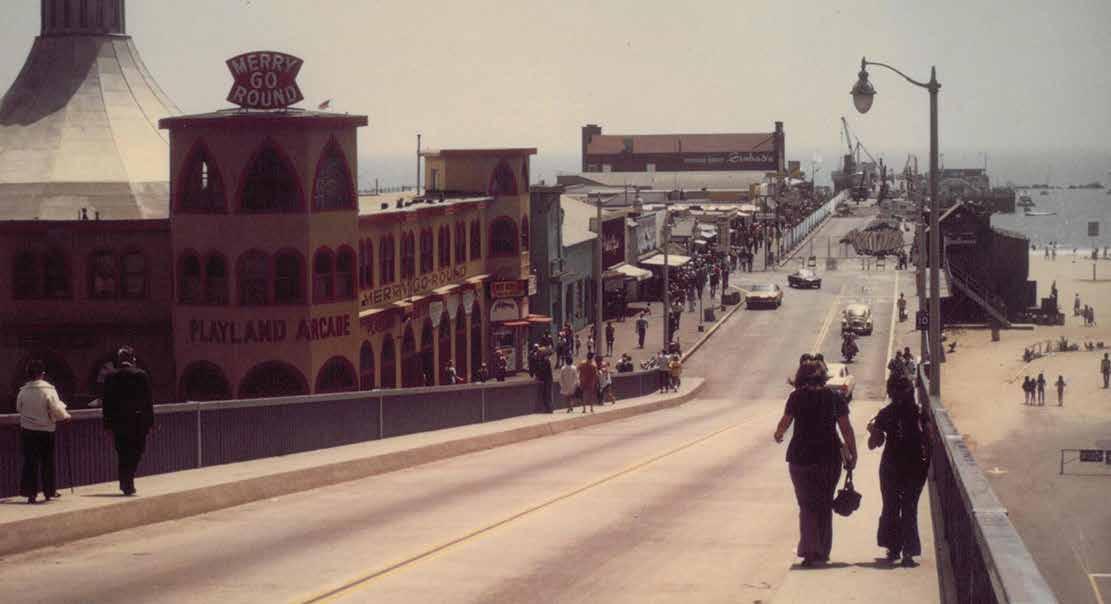
advocacy at its finest with results that have benefited the local community, Southern California and international visitors for more that 50 years,” said Jim Harris, Executive Director and Historian at Santa Monica Pier. “Guests will learn about these extraordinary efforts through a live performance that recalls the rich history and vivid account of that colorful time in Santa Monica.”

The story of the fight to save the pier revolves around the two major groups on

the pier, working independently, to rally the citizens to stop the city council’s proposal.
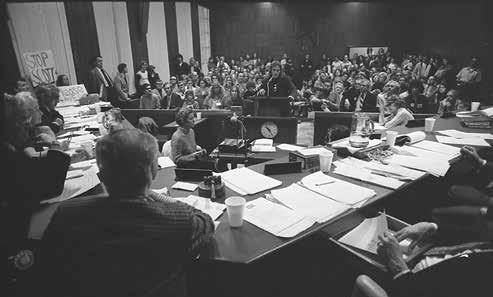
The “Save The Pier” play is using the names of real people who participated in saving the pier but behind each character in the play stands many more people. After all, in a fight to gain community support you need thousands of supporters to fight city hall. So, when the going gets tough, the tough get going and start rebelling and then voting.
The “Save The Pier” play is being produced by the Santa Monica Pier Corporation and sponsored by The Albright.


and Flower, and that building still stands. There was Jack’s at the Beach, then Pacific Dining Car, which will now be a 24-hour Emergency Pet Hospital since they shuttered up a few years ago.
When I read that Madame Wu passed away after so many years, it sparked a bit of nostalgia in me. There were many original and iconic businesses in past times, some of which are still here, but most have been replaced for one reason or another, some good, some bad. Take on Wilshire Blvd, for example (there were many others in downtown SM and on Main Street, Pico Blvd., and Santa Monica Blvd. as well).
Madame Wu started out at Wilshire Blvd and Princeton as Madame Wu’s Garden serving about 50 people, and then, due to her unique menu and celebrity status; she relocated into a much larger freestanding building which was once the Swiss Chalet Café, with celebrities frequenting there like Princess Grace of Monaco, Paul Newman, Elizabeth Taylor, Carey Grant, George Burns. Ronald Reagan, Robert Redford, and Jane Fonda, just to name a few. What a success and empowerment story her life was on so many levels; it really hits the mark and is even more relevant today.
If you look at the photo, can you just imagine what it must have been like then?
Now we have big box retail Whole Foods there, which provides a well-needed community service, but like so many new commercial developments, they speak more to big corporate commerce and less about unique style and architecture. On the opposite side of the street was the Branding Room, a popular Steakhouse, piano bar, and lounge, now Earth Wind
We still have a few hangers-on like Snug Harbor, an authentic little 40’s style café with outdoor patio seating in the back, a place for the “regulars” and newcomers alike. It and other vintage local spots are a refreshing and warm place to be for the same reason the original Farmers Market in Los Angeles on Fairfax and 3rd is still standing and operating much like it always did with many of the original family-run businesses still there. We could learn something from that!
I recall the Ball on Wilshire, a topless restaurant and bar which finally closed in the early 80s..that was one ugly Dinosaur that finally sunk into the tar pits!
Of course, there is a need for positive change and growth in response to population and societal demand, and that’s a good thing, and to be clear, there are numerous single story buildings on Wilshire that have degraded, are functionally and economically obsolete, and are strong candidates for redevelopment and transformation. There is an opportunity now to create a better Boulevard that reflects the 21st Century but in a way that preserves the essence of Santa Monica’s history and not by simply replacing or redeveloping these buildings with “copy-paste” architecture, just a mass of cold concrete and steel, with metal and wood cladding.
The primary point is that we have a dangerous trend and emphasis on nonmaster planned and unsupported growth for the long term than anything else at the expense of some of the unique places and
family-run businesses that we are and have been known for.



Reality check: Where will Santa Monica get the financial ability without creating additional debts and burdens on small businesses to upgrade the required infrastructure, police, fire, and maintenance services? There is no doubt that these are already challenging times on that front, and the pressure is being felt mostly by local, privately owned, family-run businesses that can barely hang on in some cases.
Places, for example, like Big Jo’s Hamburgers, are being replaced by corporate businesses in Santa Monica like Shake Shack, which can wellafford current high market rents. New development does not provide an economic opportunity for relocation for affordable businesses or perhaps staying in the new project if it makes sense. Funky places like Wildflower Pizza on Main St., with its sawdust floors and unique beach vibes, were closed and “upgraded” to Ashland Hill, which is a nice venue but so generic like many other places. We should consider providing economic protections for qualified and established family-run businesses instead of continuing to lose or running them out of town.
Look back for a moment and remember that Santa Monica started out as a beach town and resort with getaway beach cottages and homes for Angelenos and out-of-towners. It was a laid-back beach town at its core. Starting in the early 1900s, when amusement parks and attractions were popular, Santa Monica started bringing in vacationers and well-heeled Easterners looking to resettle in The West.
Tourism was (and arguably still is to a large degree) Santa Monica’s base economy. There was a slowdown during the Great Depression, but after that, Santa Monica slowly but incrementally transformed into a more modern and developed city over the remainder of the 20th century.
McDonnell Douglas built planes as a part of the war effort (WWII), employing over 40,000 people. The Post-war boom and demands for aviation kept this industry very profitable and supported major economic growth and expansion.
Also, tick-tock about twenty years later and the completion of the Santa Monica Freeway for the first time connected Downtown Santa Monica Los Angeles County’s freeway system, increasing access and traffic volume to and from Santa Monica almost immediately. This was a huge contribution to the exponentially increased growth which took place for the next twenty-five years or so, laying the groundwork for what our city has become today.
I recall in the 1980s, the city’s full support of development and improvements in the downtown area. For many years, this growth and development continued to bring prosperity. But today, Downtown Santa Monica is a suffering business district, inflated and staggering, saturated with vacancies and increased crime issues as small, local, ‘mom & pop” businesses are being driven out with increasing rents and displacement by national chain stores and a lack of vision in our leadership.
What will happen next? The Downtown and all our main arteries are critical and


will be of major impact and concern to most local businesses and residents, including visitors and tourists. The brakes should be put on for now on major future major development here. Instead, let’s focus on and incentivize repurposing
existing commercial property where it’s warranted and be guided by what made us a unique and special place! It’s as simple as that. Our past is a wise teacher of not only what worked but what still can, given direction by a formative and balanced Master Plan of the entire city.

It is much more intelligent to quality control buildings, traffic flow, and
architecture before the fact rather than wait and then later be forced into second-best solutions because we lacked the vision or were swayed by external economic interests. We need our government to be truly smarter than that.
Michael Jolly, AIRCRE
Santa Monica Architects for a Responsible Tomorrow: Ron Goldman,
Architect FAIA; Dan Jansenson, Architect, Building & Fire-Life Safety Commissioner; Mario Fonda Bonardi AIA, Planning Commissioner; Robert H. Taylor, Architect AIA: Thane Roberts, Architect; Samuel Tolkin Architect & Planning Commissioner; Marc Verville accountant ret.; Michael Jolly, AIRCRE santamonicasmart@gmail.com
FILE NUMBER: 2022 08441 ORIGINAL FILING This statement was filed with the County Clerk of LOS ANGELES ON 09/22/2022. The following person (persons) is (are) doing business as 1. NAZ PATRICK INSURANCE SERVICES. The full name of registrant(s) is/are: ATHENAZ CONSULTING, 13924 PANAY WAY #405, MARINA DEL REY, CA. 90292. This business is conducted by A COPORATION. The registrant commenced to transact business under the fictitious business name or names listed above on 11/02/2021. I declare that all information in this statement is true and correct. (A registrant who declares as true information which he or she knows to be false is guilty of a crime). Signed Terri L Rock MD. This Statement was filed with the County Clerk of LOS ANGELES County on September 22, 2022.
NOTICE: IN ACCORDANCE WITH SUBDIVISION (a) OF SECTION 17920, A FICTITIOUS NAME STATEMENT GENERALLY EXPIRES AT THE END OF FIVE YEARS FROM THE DATE ON WHICH IT WAS FILED IN THE OFFICE OF THE COUNTY CLERK, EXCEPT, AS PROVIDED IN SUBDIVISION (b) OF SECTION 17920, WHERE IT EXPIRES 40 DAYS AFTER ANY CHANGE IN THE FACTS SET FORTH IN THE STATEMENT PURSUANT TO SECTION 17913 OTHER THAN A CHANGE IN THE RESIDENCE ADDRESS OF A REGISTERED OWNER. A NEW FICTITIOUS BUSINESS NAME STATEMENT MUST BE FILED BEFORE THE EXPIRATION. THE FILING OF THIS STATEMENT DOES NOT OF ITSELF AUTHORIZE THE USE IN THIS STATE OF A FICTITIOUS BUSINESS NAME IN VIOLATION OF THE RIGHTS OF ANOTHER UNDER FEDERAL, STATE, OR COMMON LAW (SEE SECTION 14411 ET SEQ., BUSINESS AND PROFESSIONS CODE). SANTA MONICA MIRROR to publish 09/23/2022, 09/30/2022, 10/07/2022, and 10/14/2022
Petition
To
interested
filed, the court may grant the petition without a hearing.
NOTICE OF HEARING: Date: 12/09/22 | Time: 8:30AM | Dept: K
A copy of this ORDER to SHOW CAUSE shall be published at least once a week for four successive weeks prior to the date set for hearing on the petition in the following newspaper of general circulation, printed in this county:
SANTA MONICA MIRROR
Judge
Published:
15,

